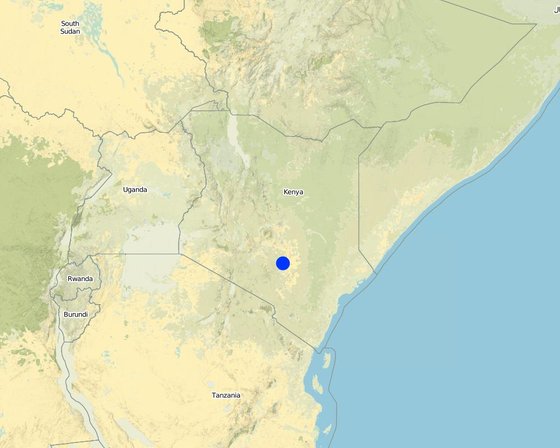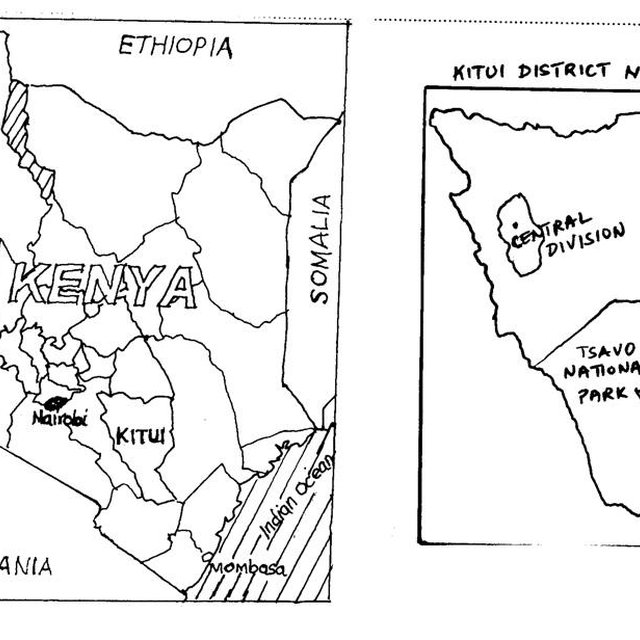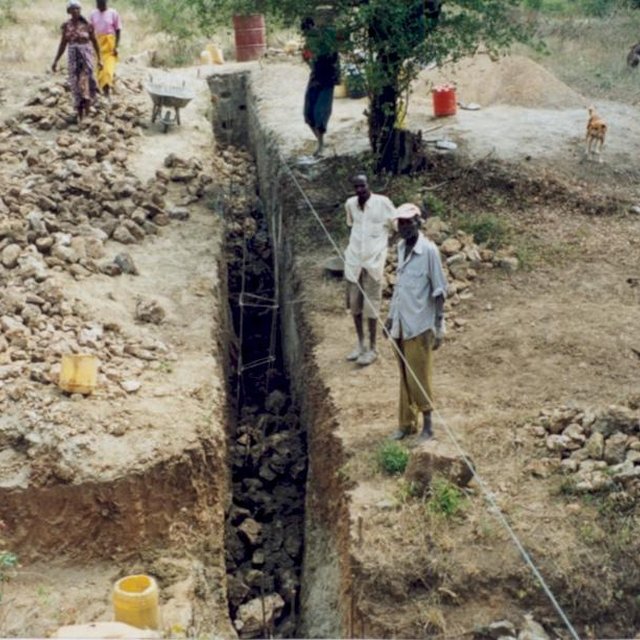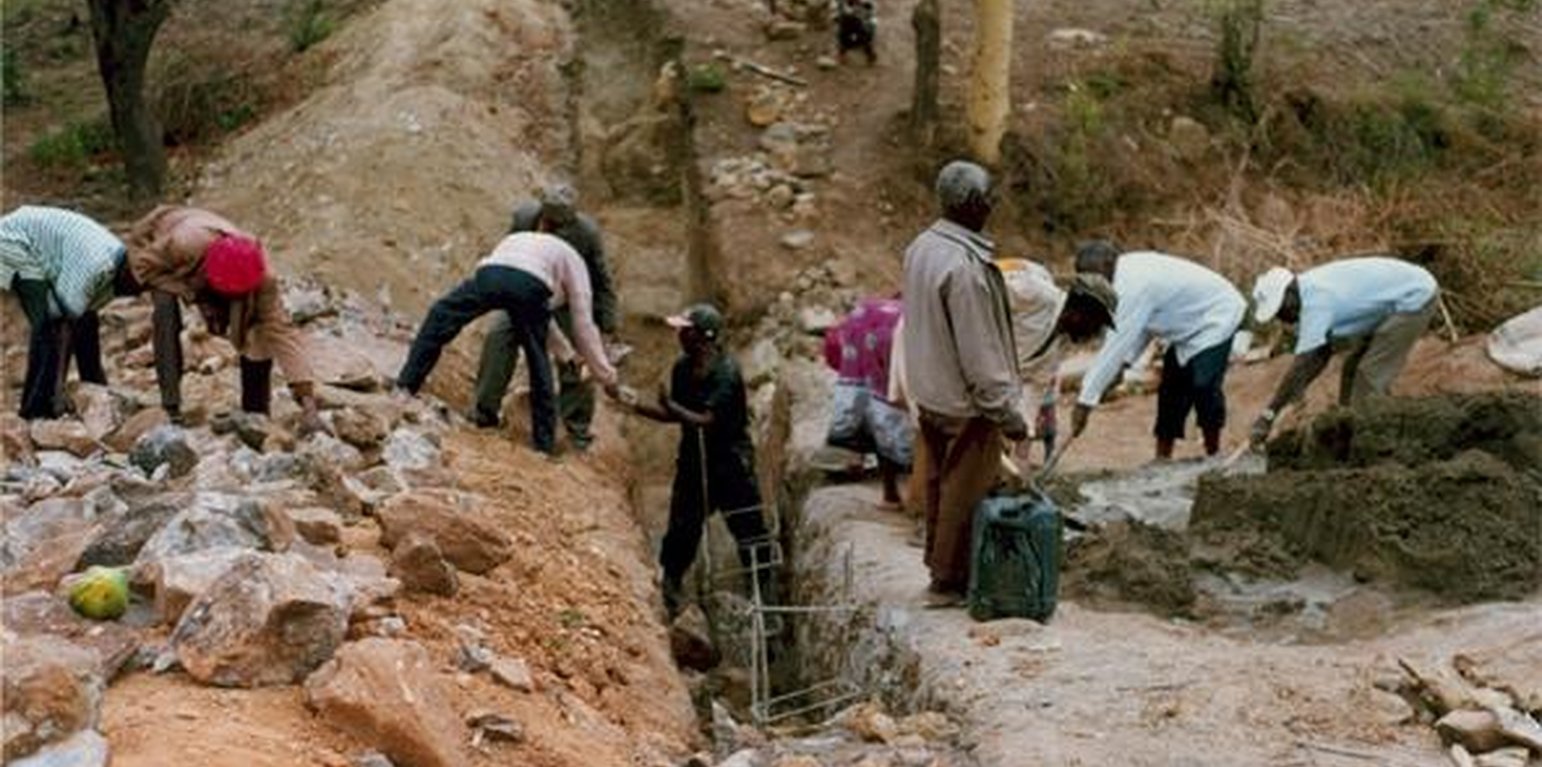SASOL community approach - for sand dams in Kitui
(Kenya)
Description
Community based water resource development
Aims / objectives: Purpose is to harness the available water resource for common interests. Objective is to make water more accesible especially in the dry season.
Methods: Communities are mobilised through participation process. Local artisans are trained on the job wherease the community provide local materials and free labour voluntarily. Supporting NGOs facilitate the training and provide inputs eg cement, reinforcing bars, skilled labour. Community mobilisation is basic to SASOL's programme for water resource development. SASOL take advantage of existing structures and conforms to the government policy refferred to as District focus for Rural Development. Before communities can be mobilised, people, must be trained and SASOL has found that training can best be done at the local level. The role of the community is as follows: 1. To provide secondary data/information 2. Identify problems, resources and propose possible interventions or community action plan. 3. Election of a committee to take charge - custodial of all purchased materials. 4. Collection of local materials and provide labour. 5. Carry out impact assessment periodically
Location

Location: Eastern, Kenya
Geo-reference of selected sites
Initiation date: 1995
Year of termination: n.a.
Type of Approach
-
traditional/ indigenous
-
recent local initiative/ innovative
-
project/ programme based

.

.
Approach aims and enabling environment
Main aims / objectives of the approach
The Approach focused mainly on SLM with other activities (tree nursery establishment, health and hygiene concerns of the community. (Community Trainings))
to build sand dams in all streams in a 200km2 part of Central Division of Kitui District.
The SLM Approach addressed the following problems: Lack of water especially in dry seasonPoor water hygiene and general public health.
Conditions enabling the implementation of the Technology/ ies applied under the Approach
Conditions hindering the implementation of the Technology/ ies applied under the Approach
-
Availability/ access to financial resources and services: Lack of funds for cement
Treatment through the SLM Approach: SASOL raises the funds
-
Institutional setting: Lack of community organization to address the prevailing problems
Treatment through the SLM Approach: participatory process to identify problems & solutions
-
Knowledge about SLM, access to technical support: Lack of trained artisans
Treatment through the SLM Approach: training of artisans
-
Other: roads and access to river valleys
Treatment through the SLM Approach: improvement of roads
Participation and roles of stakeholders involved
Stakeholders involved in the Approach and their roles
| What stakeholders / implementing bodies were involved in the Approach? |
Specify stakeholders |
Describe roles of stakeholders |
| local land users/ local communities |
Community village group (water users' group). Working land users were mainly women (most of the men are working outside the district.) Existing groups of land users; Working land users were mainly women (most of the men are working outside the district.) |
More men working outside the district.
More women engaged in the daily activities as they are availanle. Sub-locational development committees and self help groups are mobilised for a community training that follows the approach of a PRA. The community selects from 25 to 50 trainnees, both men and women. |
| national government (planners, decision-makers) |
|
|
| international organization |
Kenyan political scientist in collaboration with a Netherland hydrogeologist and an environmental planner |
|
Involvement of local land users/ local communities in the different phases of the Approach
none
passive
external support
interactive
self-mobilization
initiation/ motivation
Mainly:rapid/participatory rural appraisal; partly: workshops/seminars; PRA was carried out with the assistance of world neighbours
planning
Mainly: rapid/participatory rural appraisal; partly: public meetings; participatory planning exercise
implementation
responsibility for major steps; collection of local materials labour water etc
monitoring/ evaluation
measurements/observations; community observation and comments
Decision-making on the selection of SLM Technology
Decisions were taken by
-
land users alone (self-initiative)
-
mainly land users, supported by SLM specialists
-
all relevant actors, as part of a participatory approach
-
mainly SLM specialists, following consultation with land users
-
SLM specialists alone
-
politicians/ leaders
Decisions were made based on
-
evaluation of well-documented SLM knowledge (evidence-based decision-making)
-
research findings
-
personal experience and opinions (undocumented)
Technical support, capacity building, and knowledge management
The following activities or services have been part of the approach
-
Capacity building/ training
-
Advisory service
-
Institution strengthening (organizational development)
-
Monitoring and evaluation
-
Research
Capacity building/ training
Training was provided to the following stakeholders
-
land users
-
field staff/ advisers
-
teachers, school children/students
Form of training
-
on-the-job
-
farmer-to-farmer
-
demonstration areas
-
public meetings
-
courses
Subjects covered
through PRA and on the job
Advisory service
Advisory service was provided
-
on land users' fields
-
at permanent centres
Name of method used for advisory service: Workshop trainning; Key elements: non residential workshops, Educational tours and visits; 1) Advisory service was carried out through: projects own extension structure and agents 2) Advisory service was carried out through: projects own extension structure and agents; Extension staff: specifically hired project employees 3) Target groups for extension: land users; Activities: SWC, Tree planting, water management
Advisory service is quite adequate to ensure the continuation of land conservation activities; community resource persons trained to make it sustainable.
Institution strengthening
Institutions have been strengthened / established
-
no
-
yes, a little
-
yes, moderately
-
yes, greatly
Describe institution, roles and responsibilities, members, etc.
Type of support
-
financial
-
capacity building/ training
-
equipment
-
cooperative activity to solve water problem
Further details
Monitoring and evaluation
bio-physical aspects were ad hoc monitored
technical aspects were regular monitored
economic / production aspects were ad hoc monitored by 0 through observations; indicators: None
no. of land users involved aspects were regular monitored by 0 through measurements; indicators: None
management of Approach aspects were ad hoc monitored by 0 through observations; indicators: None
There were few changes in the Approach as a result of monitoring and evaluation: construction of dam in one single phase as opposed to several phase due to difficulties In comminity mobilisation for subsequent phases. Commencement of construction from wing walls instead of the main structure. This is psycologically attractive to land users as they remain motivated to realise completion of the dam across the river/stream bed.
Financing and external material support
Annual budget in USD for the SLM component
-
< 2,000
-
2,000-10,000
-
10,000-100,000
-
100,000-1,000,000
-
> 1,000,000
Precise annual budget: n.a.
Approach costs were met by the following donors: international (-): 50.0%; international non-government (-): 10.0%; local community / land user(s) (-): 40.0%
The following services or incentives have been provided to land users
-
Financial/ material support provided to land users
-
Subsidies for specific inputs
-
Credit
-
Other incentives or instruments
Financial/ material support provided to land users
Provision of purchased inputs like cement.
partly financed
fully financed
Cement and reinforced bars
Labour by land users was
-
voluntary
-
food-for-work
-
paid in cash
-
rewarded with other material support
Impact analysis and concluding statements
Impacts of the Approach
No
Yes, little
Yes, moderately
Yes, greatly
Did the Approach help land users to implement and maintain SLM Technologies?
more tree nurseries, more vegetable growing, more time for terracing etc instead of treking for water
Did other land users / projects adopt the Approach?
other groups using water as an entry point for development e.g. catholic diocese
Main motivation of land users to implement SLM
Sustainability of Approach activities
Can the land users sustain what hat been implemented through the Approach (without external support)?
Conclusions and lessons learnt
Strengths: land user's view
-
avail labour readily for demanding activities (How to sustain/ enhance this strength: engage groups in self help farm activities)
-
laggards are pulled along by innovators
-
communal identification of available resources and strngths
Strengths: compiler’s or other key resource person’s view
-
Participatory PRA creates awareness (How to sustain/ enhance this strength: through trainings)
-
empowers community (How to sustain/ enhance this strength: start income generating activities)
-
costs minimized through voluntary labour
-
self reliance strengthened
-
community empowered
Weaknesses/ disadvantages/ risks: land user's viewhow to overcome
-
materials are too expensive for them to afford
local fund raising initiatives
Weaknesses/ disadvantages/ risks: compiler’s or other key resource person’s viewhow to overcome
-
impact on river flow needs to be studied
References
Date of documentation: Jan. 20, 2009
Last update: Junie 12, 2017
Resource persons
-
Donald B. Thomas (dbtrat@yahoo.com) - SLM specialist
-
Sam Mutiso (sasol@kenyaweb.com) - SLM specialist
Full description in the WOCAT database
Documentation was faciliated by
Institution
- Sahelian Solutions Foundation (SASOL) - Kenya
Project
Key references
-
Thomas, D.B. 1999'where there is no water.' A story of community water development & dand dams in Kitui District, Kenya:






